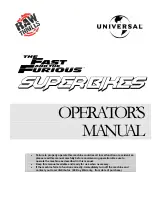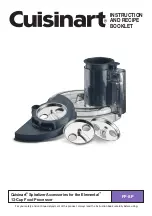
Mounting Instructions
The mounting point on the structure should be faced to a
diameter of 1.25 inches. For measurements involving
frequencies above 1 kHz, the surface should be flat within 1
mil and have surface texture no greater than 32 microinches.
The tapped hole must be perpendicular to the mounting
surface and at least two threads deeper than the stud. This will
prevent a gap between the sensor and the mounting surface–
producing optimum frequency response. (see Figure 1).
Proper screw torque on the mounting stud is also required.
Under-torquing the sensor reduces the stiffness of the
coupling. Over-torquing can cause permanent damage to the
sensor. It is recommended that 1/4-28 stud be torqued to a
maximum value of 30 inch-pounds.
Before stud mounting the sensor, a coupling fluid should be
applied to the mating surfaces. The coupling fluid protects the
mounting surface and optimizes the frequency response by
increasing the coupling stiffness. Suggested coupling fluids
are machine oil or vacuum grease. It is recommended that a
thread adhesive such as Loctite 222 be used.
Cable Routing and Electromagnetic Interference
Walkie-talkies, power lines, or even electrical sparks may
cause signal interference. The following guidelines will
eliminate many measurement errors due to electromagnetic
radiation and electrostatic discharge (ESD).
Assure that high quality, well shielded cables are used. If
cable splices are made, complete shielding must be
maintained.
Proper cable routing is imperative. Never run sensor cable
alongside AC power lines; cables must cross AC power lines
at right angles. Where possible, provide a separate grounded
conduit to enclose the sensor cable. In addition, route the
cable away from radio transmission equipment, motors/
generators, and transformers. Finally, avoid routing the cable
through areas prone to ESD. Even though Robertshaw
sensors are protected against ESD failure, temporary
distortion signals may appear at the output.
Cable Grounding and Ground Loops
In order to provide proper shielding and prevent ground
loops, cable grounding should be carefully considered.
For sensors using two conductor/shielded cable, the power is
carried on one lead and the return on the other. The cable
shield serves to protect the signal from ESD and
electromagnetic interference (EMI). The shield should be
grounded at only one point. Figure 2 shows a typical cable
connection scheme.
Cable Anchoring
After mounting the sensor, the cable should be anchored to
reduce stress at the cable terminations. When securing the
cable, leave enough slack to allow free movement of the
sensor. Figure 3 shows a recommended cable anchoring
technique.
Cable
Clamp
Machine Surface
Figure 3: Cable Anchoring
Allow 2 inches
minimum bend
radius
Table 1: Cable versus Cable Length
Figure 2: Multiconductor/Shield Configuration
Internal Shield
Isolated from Housing
Readout
Equipment
+
–
Electronics
Part Number
NEMA 4X
Cable Length
086568A0016
16 Ft.
086568A0032
32 Ft.
086568A0064
64 Ft.
086568A0112
112 Ft.
Note: IP68 cable available by special order.
.004
A
.001
—A—
1.25" min.
.25
.35
32
Figure 1: Stud Mounting: Surface Preparation
Surface
Facing




















